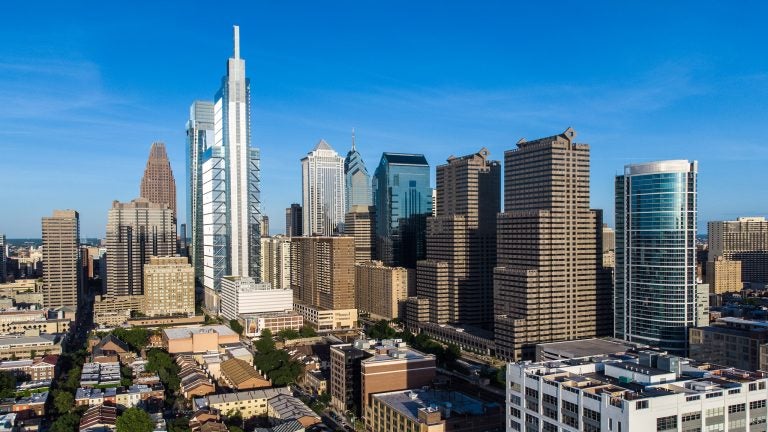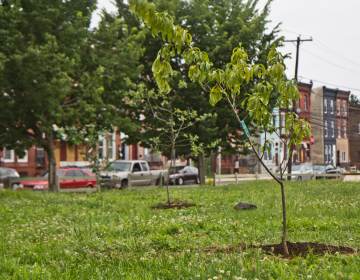Philly area finally off the ‘worst 25’ list for ozone pollution, but still gets failing grade
The American Lung Association says while ozone levels are improving, levels of particulate pollution are less promising.

The Philadelphia skyline. (Mark Henninger / Imagic Digital)
Results are in from the American Lung Association’s annual look at air pollution in American metro areas. There’s good and bad news for the Philadelphia region.
The area finally made it off the list of the 25 worst metro areas for ozone smog, but levels of particulate pollution are less promising.
“We have mixed results,” said Kevin Stewart, director of environmental health at the American Lung Association of the Mid-Atlantic.
The ALA’s 2022 State of the Air report looked at two types of air pollution: ozone and fine particulates. Both can come from cars, power plants, and other industrial sources — and both take a toll on people’s bodies. The report compared data from 2018-2020 to multi-year averages dating back to the 1990s.
During the latest three-year period, the Philadelphia-Reading-Camden metro area had an annual average of less than seven unhealthy high-ozone days — its fewest in at least two decades. The area saw an annual average of about 10 high-ozone days in 2017-2019, down from a high of over 70 in 1997-1999.
Ozone can make asthma and other lung problems worse, and can make lungs more susceptible to infection.
The ALA still gives what it defines as the Philadelphia-Reading-Camden area a “failing” grade for ozone pollution. But the latest report takes the area off the ALA’s list of the 25 worst out of over 200 metro areas for ozone pollution, where the region has been for years.
“It’s improved to the best ever for ozone smog,” Stewart said. “It’s not on the worst 25 cities list anymore, but it still gets a substantial ‘F’.”
Stewart credits air quality improvements overall to environmental regulations that lead to cleaner air in many cities around the country..
“In the past you used to see smokestacks with clouds of smoke or vehicle exhaust clearly belching smoke,” he said. “That’s very rare nowadays.”
But when you look at particulate pollution, which can exacerbate lung and cardiovascular issues, and has even been linked to heart attacks, the metro area made little progress.
“It’s among the worst 25 cities in the nation for year-round particle pollution, although it is among the better grades it’s ever had in that area,” Stewart said.
The Philadelphia-Reading-Camden metro area covers 16 counties across four states. Delaware County was the most polluted in the metro area in regards to particulates, and Philadelphia and Bucks counties tied for worst in regards to ozone.
Children, older adults, and people who work outside are most vulnerable to the effects of air pollution.
The ALA also found that people of color were 61% more likely than white people to live in a county the association flagged with a failing grade for at least one pollutant, and more than three times as likely to live in a county with a failing grade for all measures of pollution. Researchers have found that neighborhoods that were redlined in the 1930s have higher levels of air pollution decades later.
These patterns have real implications for health and quality of life.
“Even one bad air day can be one bad air day too many,” Stewart said. “That’s enough to send folks to the hospital emergency room or cause them at least to stay home from school or work because of a health response.”
The ALA urges local governments to take action to reduce air pollution — including adopting climate action plans, buying more electric vehicles for municipal fleets and purchasing renewable and non-combustion electricity.
Individuals and families can conserve electricity, avoid burning leaves or trash and bike or take transit instead of driving gas-powered cars.

Subscribe to PlanPhilly
WHYY is your source for fact-based, in-depth journalism and information. As a nonprofit organization, we rely on financial support from readers like you. Please give today.









